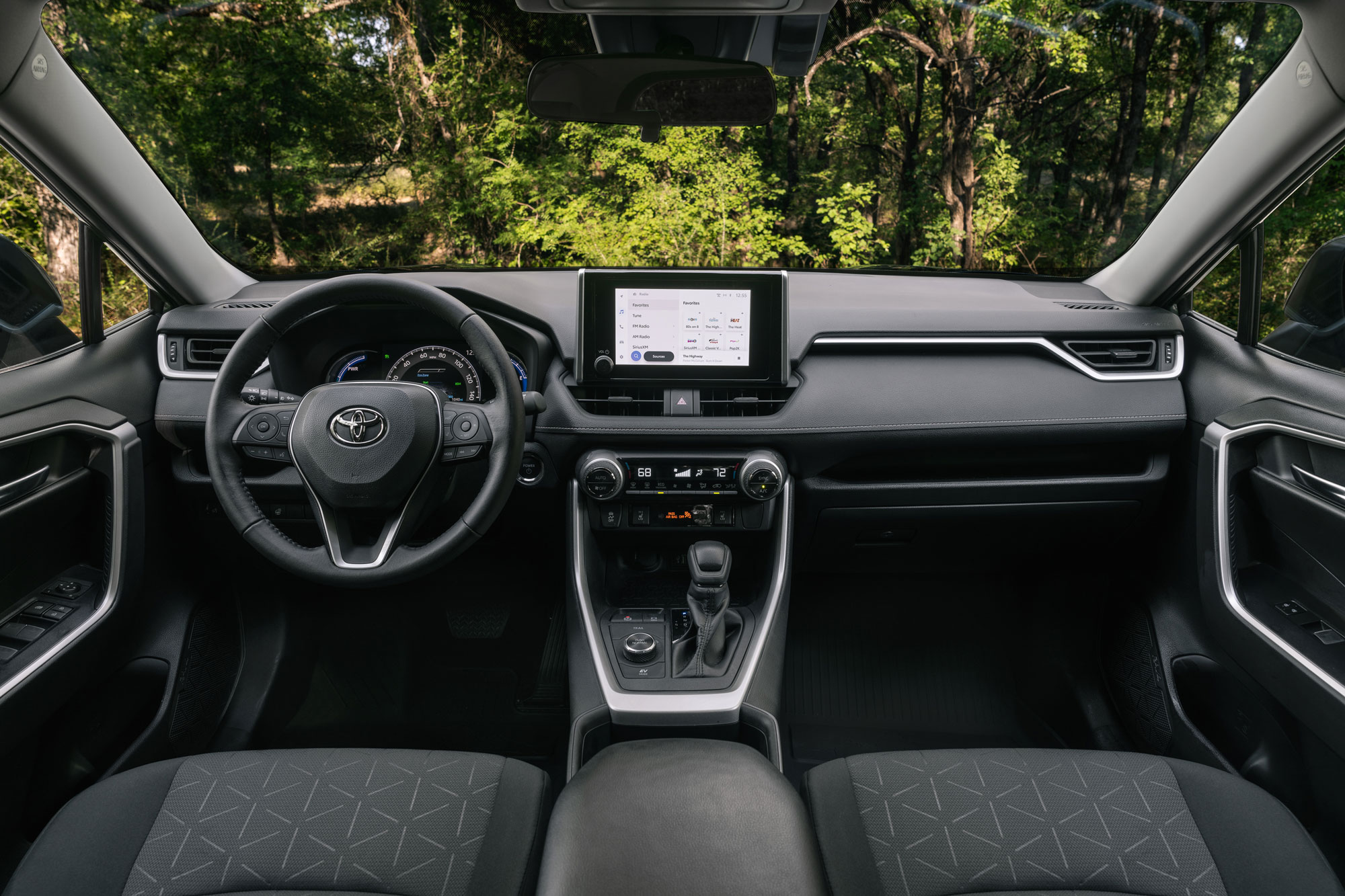Compared: 2024 Honda CR-V vs. 2024 Toyota RAV4
These capable crossovers compete in a test of affordability, features, and fuel economy.
 Honda | Toyota
Honda | Toyota
If you have a family, live an active lifestyle, or are otherwise on the go, it's hard to go wrong with a compact crossover SUV. They offer a great balance of cargo and passenger space, while still being small enough to be practical daily drivers. Add a hybrid powertrain and some off-road equipment, and an already versatile vehicle becomes even more capable.
Two leaders in this class, the 2024 Honda CR-V and 2024 Toyota RAV4, are worth a closer look.
 Toyota
Toyota
The RAV4 Generally Costs Less
The 2024 RAV4 comes in a staggering 13 versions, the highlights being the $30,000 LE base model, the $33,000 Hybrid LE, and the Hybrid Limited, which rounds out the range at just over $41,000. All-wheel drive (AWD) comes standard on all hybrid trims but is otherwise a $1,200 option.
 Honda
Honda
The CR-V lineup is much more streamlined, consisting of six trims, including the $31,000 base LX, the $35,000 Sport Hybrid, and the top-of-the-line $41,000 Sport Touring Hybrid. AWD is only standard on the Sport Touring, with Honda offering a $1,500 drivetrain upgrade on all other iterations.
 Honda
Honda
Features Make the Difference in These SUVs
The CR-V makes a good first impression with its available leather upholstery and roomy interior. It can fit up to 76.5 cubic-feet of gear, while the RAV4 is limited to 69.8 cu-ft. Those bigger dimensions help with legroom, as the rear seats enjoy almost 4 more inches of space than in the Toyota.
The CR-V also boasts the larger available stereo upgrade, featuring a 12-speaker sound system from Bose, compared with the RAV4's 11-speaker JBL unit.
 Toyota
Toyota
While the RAV4 can't match the CR-V's genuine leather — it's limited to either cloth upholstery or Toyota's proprietary SofTex synthetic leather — it has no shortage of creature comforts. It boasts items such as an available panoramic moonroof, heated rear seats, and a rear power outlet in the far back, none of which are available on any CR-V trim. Even certain options that both vehicles share, such as available roof rails and a hands-free power liftgate, are available at a lower cost of entry in the Toyota.
 Toyota
Toyota
Fuel Efficiency Estimates Are Virtually a Draw
Due to each vehicle's drivetrains and available hybrid options being much the same, fuel-economy stats are quite evenly matched.
The front-wheel-drive CR-V received an EPA rating of 28/34/30 mpg city/highway/combined, with the RAV4 equivalent essentially matching the Honda at 27/35/30 mpg. Meanwhile, their AWD counterparts clock in at 27/32/29 mpg for the Honda and 27/33/29 mpg for the Toyota.
 Honda
Honda
The most fuel-efficient iterations of each are obviously the hybrids, with the electrically aided CR-V achieving 43/36/40 mpg, while the RAV4 hybrid gets 41/38/39 mpg.
All vehicle pricing includes MSRP plus destination charges (set at the time of publication) and will be rounded to the nearest thousand.
Written by humans.
Edited by humans.
 Brennan Sullivan
Brennan SullivanBrennan Sullivan is a writer and lifelong car fanatic. With an appreciation for all makes and models, Brennan is particularly passionate about the rich history of the automotive industry. In his spare time, he's the caretaker of a 1962 Sunbeam Alpine, and a Golden Retriever named Willow.
Related articles
View more related articles